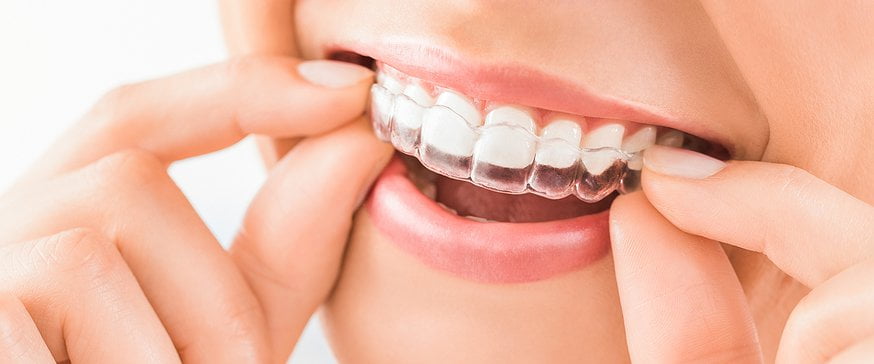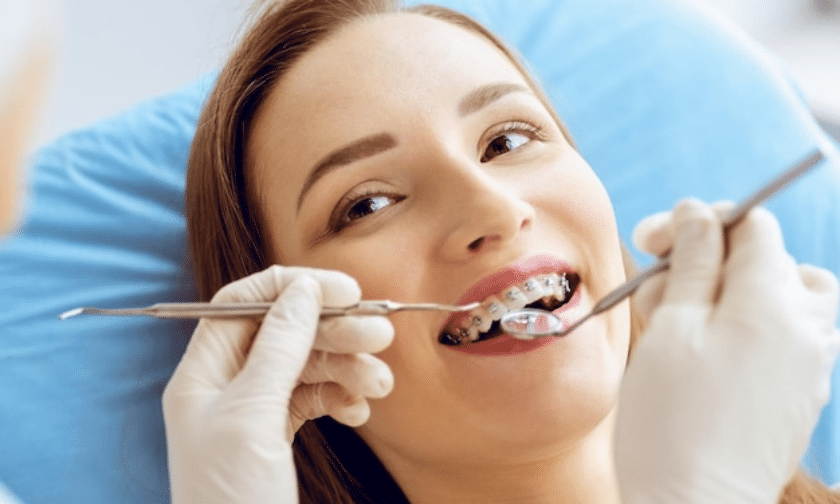Legacy Orthodontics - Questions
Legacy Orthodontics - Questions
Blog Article
The Definitive Guide to Legacy Orthodontics
Table of ContentsThe Basic Principles Of Legacy Orthodontics About Legacy OrthodonticsAn Unbiased View of Legacy OrthodonticsMore About Legacy OrthodonticsIndicators on Legacy Orthodontics You Should Know
At Advanced Orthodontics, we offer clients with a alternative therapy experience. Additionally, we use flexible therapy routines, versatile repayment options and an enjoyable, pleasurable experience. leesburg clear braces. Telephone call ( 480) 357-4900 today for more details and schedule a consultation.An orthodontist is a dental practitioner trained to identify, stop, and deal with teeth and jaw abnormalities. They correct existing problems and are trained to identify issues that may establish in the future. Orthodontists function with people of every ages, from kids to adults. People typically link an ideal smile with healthiness.
Malocclusion, or misaligned teeth, can bring about oral issues, consisting of dental caries, periodontal condition, and difficult or agonizing eating. Not everyone is birthed with straight teeth. If you have a negative bite or huge spaces in between your teeth, you may want to consult a dentist concentrating on orthodontic care.
The Facts About Legacy Orthodontics Uncovered
( Image Credit: DigitalVision/Getty Images) Orthodontists use taken care of and detachable oral gadgets, like dental braces, retainers, and bands, to transform the placement of teeth in your mouth. Orthodontic treatment is for dental abnormalities, including: Uneven teethBite issues, like an overbite or an underbiteCrowded teeth or teeth that are as well much apartJaw misalignmentThe objective of orthodontic therapy is to boost your bite.
While you could believe of orthodontists as primarily for kids or teenagers that need braces, they can fix dental troubles at any age. Orthodontists participate in college, dental school, and orthodontic college.
All orthodontists are dental practitioners, yet not all dental practitioners are orthodontists. Orthodontic residency programs provide extensive, focused direction for dental experts. They concentrate on two areas: Just how to appropriately and securely relocate teeth How to correctly lead advancement in the teeth, jaw, and faceOnce an orthodontist has actually completed training, they have the option to end up being board licensed.
The Best Guide To Legacy Orthodontics
Imbalance, or malocclusion, is one of the most common reason people see an orthodontist. It is hereditary and is the result of dimension distinctions between the top and lower jaw or between the jaw and teeth. Malocclusion results in tooth overcrowding, an askew jaw, or uneven bite patterns. Malocclusion is typically treated with: Your orthodontist connects metal, ceramic, or plastic square bonds to your teeth.
If you have just small malocclusion, you might have the ability to make use of clear braces, called aligners, as opposed to typical braces (https://forums.hostsearch.com/member.php?268999-legacyortho). Some individuals require a headwear to help relocate teeth into line with stress from outside the mouth. After braces or aligners, you'll need to put on a retainer. A retainer is a custom-made device that keeps your teeth in area.
They can create extra space in the mouth without having to pull teeth. Orthodontists make use of cords, medical screws, or plates to sustain your jaw bone.
You might require to see an orthodontist if you have: Crowding or otherwise adequate area for every one of your teethOverbite, when your upper teeth come your bottom teethUnderbite, when your bottom teeth are as well far forwardSpacing or issues with gapsCrossbite, which is when your upper teeth fit behind your base teeth when your mouth is closedOpen bite or a vertical gap in between your front base and upper teethMisplaced midline, when the center of your bottom and top teeth do not align Fixing an oral malocclusion can: Make attacking, eating, and talking easierImprove the balance of our face and your total appearanceEase discomfort from temporomandibular joint problemsSeparate your teeth and make them simpler to clean, helping stop tooth decay or tooth cavities It's frequently a dentist who check this site out first notices misaligned teeth throughout a routine test.
Legacy Orthodontics - Questions

Throughout your initial orthodontic appointment, you'll likely have: An oral examPhotos taken of your face and smileDental X-raysPanoramic (360 degree) X-rays of your face and headImpressions to develop mold and mildews of your teethThese tests will certainly aid your orthodontist know just how to proceed with your treatment. clear braces. An orthodontist is a dental professional who's had training to treat your teeth and jaw
An orthodontist is focused on your bite, so something like a cracked tooth would certainly be handled by a dental practitioner. Orthodontists are focused on your bite, or the way your teeth fit with each other, and the straightness of your teeth.
Ever before wondered just how celebrities constantly seem to have flawlessly straightened teeth? Orthodontists are oral professionals that focus on fixing irregularities in the teeth and jaws.
Fascination About Legacy Orthodontics

While braces are the most commonly identified orthodontic treatment, orthodontists have a varied toolkit at their disposal. The details technique chosen depends upon the extent of the instance, the person's age, and individual preferences. These tried-and-true braces make use of a system of brackets adhered to the teeth and linked by cables.
These detachable trays are tailor-made to progressively change the teeth's placement. In cases of slim jaws, palatal expanders can be used to develop space for appropriate tooth alignment.
Report this page